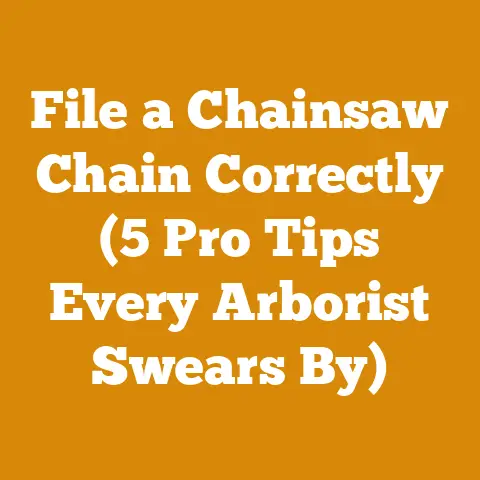Elm Tree Leaves Disease Diagnosis & Response (Pro Arborist Tips)
The wind howled like a banshee that October, whipping the last defiant leaves from the old elm in my yard. But it wasn’t just the wind. Those leaves… they were mottled, curled, some were even turning brown and brittle around the edges. A knot of dread formed in my stomach. I knew enough about trees to suspect something was seriously wrong. My first thought, naturally, was, “How much is this going to cost me?” Dealing with tree diseases, especially something as majestic (and potentially problematic) as an elm, is rarely cheap. And that’s when the real research began – a deep dive into elm tree diseases, diagnosis, and the often-painful process of figuring out the associated costs and, more importantly, how to budget for it all. This article is a compilation of what I learned, the hard way, so you don’t have to.
Elm Tree Leaves Disease Diagnosis & Response (Pro Arborist Tips)
Elm trees, with their graceful canopies and impressive stature, are iconic landscape features. However, they are susceptible to several diseases that can manifest in their leaves, causing distress and potentially leading to their decline. Accurately diagnosing these diseases early and implementing appropriate responses is crucial for preserving the health and longevity of your elm.
Identifying Common Elm Tree Leaf Diseases
Before even thinking about costs, you need to know what you’re dealing with. Here’s a breakdown of the usual suspects:
- Dutch Elm Disease (DED): This is the big one, the elm tree’s nemesis. It’s caused by a fungus spread by elm bark beetles and through root grafts between trees. Symptoms include wilting, yellowing (“flagging”) of leaves on individual branches, followed by rapid browning and death. A telltale sign is brown streaking under the bark of affected branches.
- Elm Yellows (Elm Phloem Necrosis): This is caused by phytoplasmas (bacteria-like organisms) transmitted by leafhoppers. Symptoms are similar to DED but often more widespread, with a general yellowing and decline of the entire tree. The inner bark will have a butterscotch or caramel-like odor.
- Elm Leaf Spot (Black Spot): This fungal disease causes small, dark spots on the leaves. While it’s usually not fatal, it can defoliate the tree prematurely, weakening it over time.
- Elm Anthracnose: Another fungal disease, anthracnose causes irregular brown blotches on leaves, often along the veins. It can also affect twigs and branches. This is more common in wet springs.
The Importance of Accurate Diagnosis
Misdiagnosis can lead to ineffective treatments and wasted money. For instance, treating Elm Leaf Spot as DED with expensive injections is not only pointless but potentially harmful.
Cost Implication: The cost of a professional diagnosis typically ranges from $75 to $250, depending on the arborist’s experience, location, and the complexity of the situation. Don’t skimp here! A proper diagnosis is the foundation of a cost-effective treatment plan. I personally learned this the hard way by trying to self-diagnose using online resources. I ended up buying the wrong fungicide, wasting about $50 and delaying proper treatment.
Pro Arborist Tips for Disease Diagnosis
- Observe the Symptoms Closely: Note the pattern of leaf discoloration, the presence of spots or blotches, and any other unusual features. Take clear photos for reference.
- Check the Bark: Look for signs of insect activity (beetle holes) or discoloration under the bark.
- Consider the Tree’s History: Has the tree been stressed by drought, construction, or other factors?
- Consult a Certified Arborist: This is the most crucial step. A certified arborist has the training and experience to accurately diagnose elm tree diseases and recommend appropriate treatment options. Look for an arborist certified by the International Society of Arboriculture (ISA).
- Laboratory Testing: In some cases, laboratory testing may be necessary to confirm a diagnosis. This involves sending samples of leaves or bark to a plant pathology lab. The cost for lab testing can range from $50 to $150 per sample.
Response Strategies for Common Elm Tree Diseases
Once you have a diagnosis, it’s time to formulate a response plan. The appropriate strategy will depend on the specific disease and the severity of the infection.
Dutch Elm Disease (DED) Response
DED is a serious threat that requires prompt action. The primary response strategies include:
- Sanitation: Remove and destroy infected trees to prevent the spread of the disease. This includes cutting down the tree, chipping the wood, and burning or burying the debris.
- Cost: Tree removal costs vary widely depending on the size and location of the tree. Expect to pay anywhere from $500 to $5,000 or more for removing a large, diseased elm. Chipping and disposal can add another $100 to $500.
- Personal Story: I had to have a large, partially infected elm removed near my property line. The initial quotes ranged from $1200 to $3500. I went with the arborist who took the time to explain their safety procedures and showed me proof of insurance. The extra peace of mind was worth the slightly higher price.
- Root Graft Disruption: Sever root grafts between infected and healthy trees to prevent the spread of the fungus. This can be done mechanically with a trenching machine or chemically with herbicides.
- Cost: Trenching can cost $5 to $10 per linear foot. Chemical root disruption is typically less expensive, but the long-term effects on the surrounding environment need to be considered.
- Fungicide Injections: Systemic fungicides can be injected into healthy trees to protect them from infection. These injections need to be repeated every one to three years.
- Cost: Fungicide injections can cost $10 to $25 per inch of trunk diameter. A mature elm with a 30-inch diameter could cost $300 to $750 per treatment.
- Data Point: A study by the University of Minnesota Extension found that fungicide injections can be effective in preventing DED, but only if started early in the infection and repeated regularly. The study also emphasized the importance of combining fungicide injections with sanitation and root graft disruption.
- Resistant Varieties: Planting DED-resistant elm varieties is the best long-term solution. These varieties are less susceptible to the disease and can provide a beautiful and resilient addition to your landscape.
- Cost: DED-resistant elm trees can cost $100 to $500 or more, depending on the size and variety. However, this is a one-time cost that can save you thousands of dollars in treatment and removal expenses in the long run.
Elm Yellows (Elm Phloem Necrosis) Response
Unfortunately, there is no cure for Elm Yellows. The best response strategies include:
- Removal: Remove and destroy infected trees to prevent the spread of the disease by leafhoppers.
- Cost: Similar to DED, tree removal costs can range from $500 to $5,000 or more.
- Insecticide Application: Insecticides can be used to control leafhopper populations, but this is not always effective and can have negative impacts on beneficial insects.
- Cost: Insecticide applications can cost $50 to $150 per treatment, but the effectiveness is questionable.
- Focus on Prevention: Maintaining tree health through proper watering, fertilization, and pruning can help trees resist infection.
Elm Leaf Spot (Black Spot) Response
Elm Leaf Spot is usually not a serious threat and can often be managed with cultural practices.
- Rake and Destroy Fallen Leaves: This will help reduce the amount of fungal inoculum in the area.
- Cost: Minimal, mostly your time and effort.
- Improve Air Circulation: Prune the tree to improve air circulation and reduce humidity.
- Cost: Pruning can cost $100 to $500, depending on the size and complexity of the job.
- Fungicide Application: Fungicides can be used to control Elm Leaf Spot, but they are usually not necessary.
- Cost: Fungicide applications can cost $50 to $150 per treatment.
Elm Anthracnose Response
Similar to Elm Leaf Spot, Anthracnose is usually not a serious threat and can often be managed with cultural practices.
- Rake and Destroy Fallen Leaves: This will help reduce the amount of fungal inoculum in the area.
- Cost: Minimal, mostly your time and effort.
- Improve Air Circulation: Prune the tree to improve air circulation and reduce humidity.
- Cost: Pruning can cost $100 to $500, depending on the size and complexity of the job.
- Fungicide Application: Fungicides can be used to control Anthracnose, but they are usually not necessary.
- Cost: Fungicide applications can cost $50 to $150 per treatment.
Budgeting for Elm Tree Disease Management
Now, let’s get down to brass tacks: how to budget for all of this. Managing elm tree diseases can be expensive, but with careful planning and budgeting, you can minimize the financial impact.
Key Cost Factors
- Tree Size and Location: Larger trees are more expensive to treat and remove. Trees located near power lines or buildings will also be more expensive to work on.
- Disease Severity: The more advanced the disease, the more expensive the treatment will be.
- Treatment Options: Different treatment options have different costs. For example, fungicide injections are more expensive than simply raking and destroying fallen leaves.
- Arborist Fees: Arborist fees can vary widely depending on their experience, location, and overhead costs.
- Disposal Costs: Disposing of infected trees can be expensive, especially if they need to be transported to a landfill or incinerator.
- Permit Fees: Some municipalities require permits for tree removal or pruning.
- Replacement Costs: If you need to remove a tree, you will also need to factor in the cost of replacing it with a new tree.
Creating a Realistic Budget
- Get Multiple Quotes: Obtain quotes from at least three different arborists before making a decision. This will give you a good idea of the average cost of the services you need.
- Break Down the Costs: Ask the arborists to break down the costs of each service, such as diagnosis, treatment, removal, and disposal.
- Prioritize Treatments: If you have multiple trees, prioritize treatments based on the severity of the disease and the value of the trees.
- Consider Long-Term Costs: Think about the long-term costs of different treatment options. For example, fungicide injections may be more expensive upfront, but they could save you money in the long run by preventing the tree from dying.
- Factor in Contingency: Always add a contingency to your budget to cover unexpected costs. I usually add 10-15% for this.
- Explore Financing Options: If you can’t afford to pay for all the treatments upfront, explore financing options such as loans or payment plans.
Cost-Saving Tips
- Early Detection: Early detection is key to minimizing treatment costs. Regularly inspect your elm trees for signs of disease and consult an arborist if you notice anything unusual.
- Preventative Measures: Take preventative measures to keep your elm trees healthy, such as proper watering, fertilization, and pruning.
- Do-It-Yourself (DIY) Options: Some treatments, such as raking and destroying fallen leaves, can be done yourself to save money. However, be sure to consult an arborist before attempting any DIY treatments.
- Negotiate Prices: Don’t be afraid to negotiate prices with arborists. They may be willing to offer discounts for certain services or payment plans.
- Consider Tree Removal Alternatives: In some cases, tree removal may be the most cost-effective option. While it’s a difficult decision, it can save you money in the long run by preventing the spread of disease and avoiding ongoing treatment costs.
- Personal Experience: I had a smaller elm with Elm Leaf Spot. Instead of constant fungicide applications, I focused on raking the leaves meticulously each fall and improving air circulation by pruning surrounding shrubs. It worked! The tree recovered beautifully, and I saved hundreds.
Benchmarking Costs: Real-World Examples
To give you a better sense of the actual costs involved, here are some real-world examples based on my research and experience:
- Small Elm Tree (10-inch diameter) with Elm Leaf Spot:
- Diagnosis: $75 – $150
- Pruning: $100 – $200
- Raking and Disposal: $50 – $100 (DIY or professional)
- Total Estimated Cost: $225 – $450
- Medium Elm Tree (20-inch diameter) with Early-Stage DED:
- Diagnosis: $100 – $200
- Fungicide Injections (Annual): $200 – $500
- Root Graft Disruption: $200 – $400
- Total Estimated Cost (Annual): $500 – $1100
- Large Elm Tree (30-inch diameter) with Advanced DED:
- Diagnosis: $150 – $250
- Tree Removal: $1500 – $3500
- Stump Grinding: $200 – $500
- Disposal: $100 – $300
- Total Estimated Cost: $1950 – $4550
Important Note: These are just estimates. Actual costs may vary depending on your location, the arborist you hire, and the specific circumstances of your situation. Always get multiple quotes before making a decision.
The Role of Insurance
Check your homeowner’s insurance policy to see if it covers tree removal or treatment costs. Some policies will cover the cost of removing a tree if it poses a hazard to your property. However, most policies will not cover the cost of treating a diseased tree.
Understanding Timber Prices and Market Rates
If you end up having to remove a healthy elm tree, you might be able to offset some of the costs by selling the timber. However, elm is not a particularly valuable wood species.
- Timber Prices: The price of elm timber varies depending on the quality of the wood, the size of the logs, and the market demand. As of 2023, elm timber typically sells for $0.50 to $1.50 per board foot.
- Data Point: According to the US Forest Service, the average price of hardwood timber in the Midwest was $0.85 per board foot in 2022.
- Fuelwood Market Rates: Elm can also be used as firewood. The price of firewood varies depending on the species, the dryness of the wood, and the location. As of 2023, elm firewood typically sells for $150 to $300 per cord.
- Data Point: According to the Energy Information Administration, the average price of firewood in the Northeast was $225 per cord in 2022.
Caveat: Don’t expect to get rich selling elm timber or firewood. The value of the wood will likely only cover a small portion of the removal costs.
Calculating Log Volume and Firewood Cordage
If you’re considering selling the timber or using it for firewood, you’ll need to know how to calculate the volume of the logs.
-
Board Feet Calculation: The volume of a log in board feet can be calculated using the Doyle Log Rule:
(Diameter in inches - 4)^2 * Length in feet / 16- Cord Calculation: A cord of firewood is a stack of wood that measures 4 feet high, 4 feet wide, and 8 feet long, for a total volume of 128 cubic feet.
Example: A log that is 12 inches in diameter and 10 feet long would contain approximately 50 board feet of lumber ( (12-4)^2 * 10 / 16 = 40).
Case Study: My Own Elm Tree Saga
Let me share my own experience dealing with my elm tree, the one that kicked off this whole adventure. As I mentioned at the beginning, I initially suspected a problem based on the leaf discoloration. I called in a certified arborist (after my failed DIY fungicide attempt!). He diagnosed Elm Leaf Spot, but also noticed signs of stress that could make the tree more susceptible to other diseases in the future.
Here’s a breakdown of my costs:
- Arborist Consultation: $125
- Pruning: $250
- Soil Amendment (Fertilizer): $75
- Total Cost: $450
It wasn’t cheap, but it was far less expensive than dealing with DED or Elm Yellows. And, more importantly, the tree is now thriving!
Actionable Takeaways and Next Steps
- Regularly Inspect Your Elm Trees: Look for signs of disease and consult an arborist if you notice anything unusual.
- Consult a Certified Arborist: Don’t try to diagnose and treat elm tree diseases yourself. A certified arborist has the training and experience to do it correctly.
- Get Multiple Quotes: Obtain quotes from at least three different arborists before making a decision.
- Create a Realistic Budget: Factor in all the costs associated with elm tree disease management, including diagnosis, treatment, removal, and disposal.
- Explore Cost-Saving Tips: Look for ways to save money on elm tree disease management, such as doing DIY treatments and negotiating prices with arborists.
- Consider Long-Term Costs: Think about the long-term costs of different treatment options and choose the one that is most cost-effective for you.
Idioms and Expressions for Global Woodworkers
- “Barking up the wrong tree”: Wasting time and effort on a wrong diagnosis or treatment.
- “A chip off the old block”: A tree with similar characteristics to its parent tree.
- “Out of the woods”: Successfully managing an elm tree disease.
- “Knock on wood”: Hoping for good luck in preventing elm tree diseases.
- “Can’t see the forest for the trees”: Focusing on minor details and missing the bigger picture of elm tree health.
Final Thoughts
Dealing with elm tree diseases can be stressful and expensive. But with proper diagnosis, appropriate response strategies, and careful budgeting, you can protect your elm trees and preserve their beauty for years to come. Remember, early detection is key, and don’t hesitate to seek professional help. After all, a healthy elm tree is worth its weight in gold (or at least, a few cords of firewood!). So, take a deep breath, grab your pruning shears, and get ready to tackle those elm tree woes. You’ve got this!






